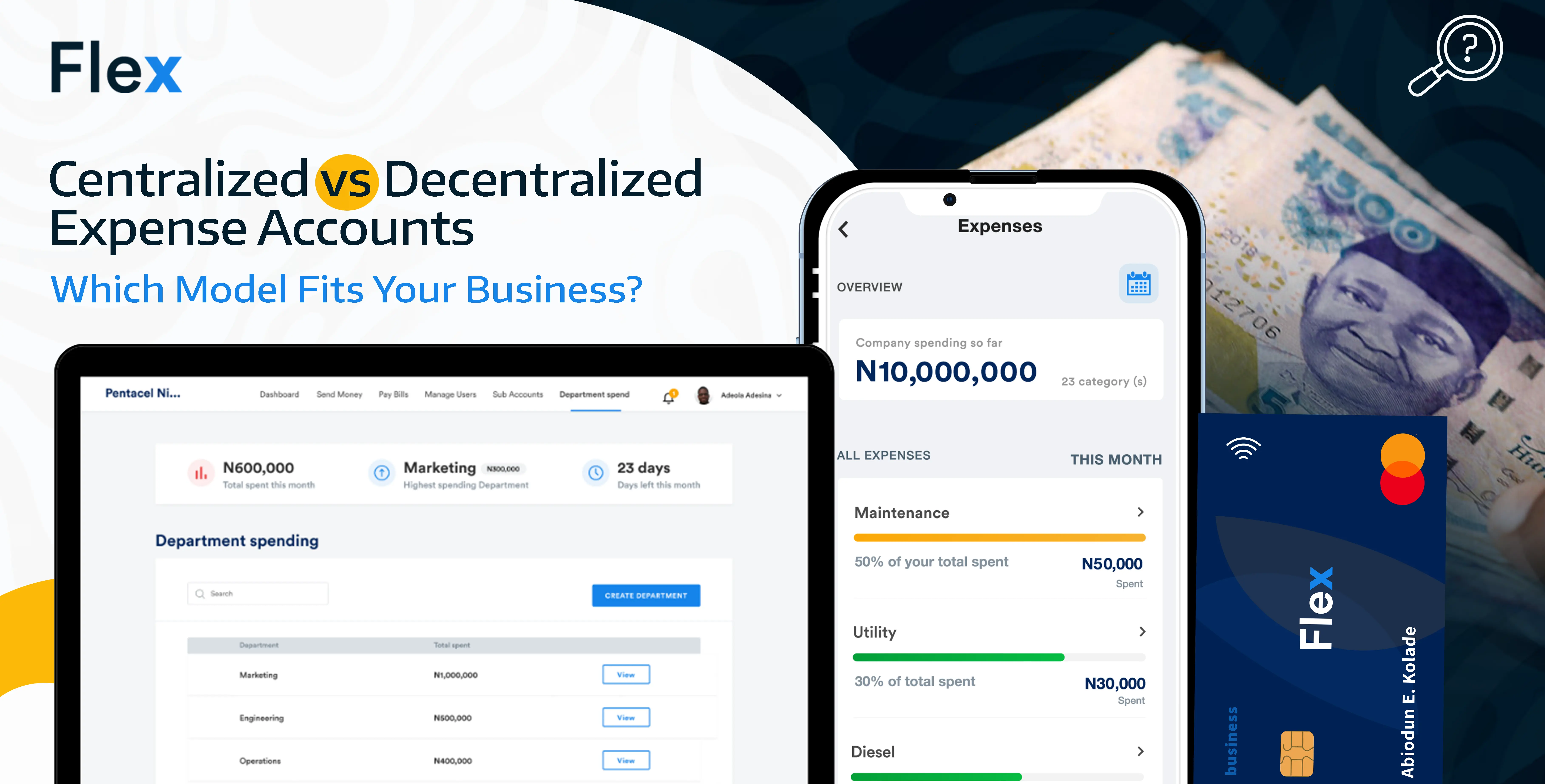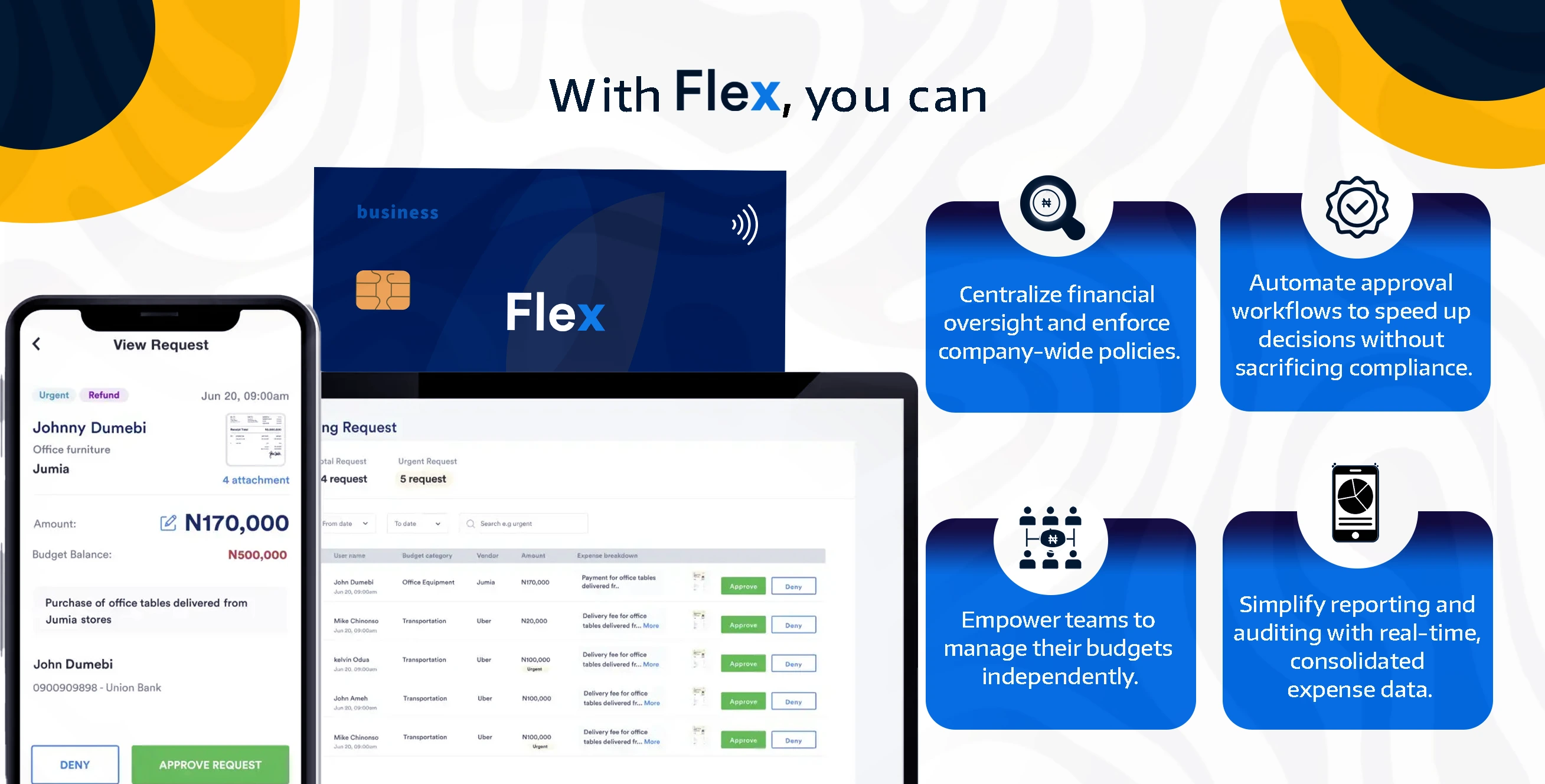
Managing company spending isn’t just about setting limits, it’s about choosing the right system to control it. In fact, 60% of finance leaders report they don't have full visibility into their organization's transactions. One major decision shaping this efficiency is whether your business uses centralized or decentralized expense accounts.
The model you choose can either tighten your financial controls or empower your teams, but getting it wrong could cost more than you think.
In this blog, you’ll learn:
- The key differences between centralized and decentralized expense accounts
- The benefits and drawbacks of each model
- Important factors to consider when choosing the best expense management structure for your company’s size, structure, and growth plans.
What Are Centralized Expense Accounts?
A centralized expense account system is a financial structure where all company spending is managed and overseen by a single, central department, typically the finance team.
Instead of giving individual departments or employees control over their own budgets and spending decisions, all requests for payments, reimbursements, or company purchases are funneled through a unified approval and payment process.
This model ensures that spending is fully aligned with company policies, offering a high level of financial control and standardization across the organization.
How Centralized Expense Accounts Work
In a centralized system, the management of company expenses follows a streamlined flow, allowing finance teams to maintain strict oversight and minimize inconsistencies. Here’s how it typically works:
Central Approval Processes
- All expense requests must pass through a central approval process.
- Finance team or designated approvers ensure every expense aligns with company budgets and spending policies.
Centralized Payment Execution
- Once approved, payments are processed by a central team.
- This reduces the risk of duplicated or unauthorized transactions and consolidates payment records in one place.
Central Reporting & Auditing
- Centralized systems enable real-time reporting and financial auditing.
- Transparency in transactions helps ensure compliance and provides better insights into financial planning.
Benefits of Centralized Expense Accounts
Choosing a centralized expense account model can offer businesses a wide range of strategic and operational advantages, especially when it comes to financial oversight, efficiency, and risk management. Here's why:
Stronger Financial Control:
- Full visibility into every expense helps prevent unauthorized spending.
- Consolidated reporting ensures consistent budgeting and better cost alignment.
Streamlined Approval Workflow:
- Centralized approval processes create clear accountability and consistent policies.
- Automated tools speed up approval and improve communication.
Simplified Reconciliation & Reporting:
- Centralized systems reduce errors during month-end reconciliation.
- Real-time insights into company spending give leadership a clear financial overview.
Reduced Risk:
- Centralized oversight helps spot irregularities and reduces opportunities for unauthorized spending.
- Policies are consistently enforced, providing a strong defense against financial mismanagement.
Drawbacks of Centralized Expense Accounts
While centralized expense accounts offer strong control and visibility, they may introduce operational friction. Here are key challenges to be aware of:
Potential Bottlenecks in Approvals:
- Delays may occur when all spending requests funnel through a single department, especially during busy periods.
- Staff shortages or inefficient workflows can further exacerbate this issue.
Reduced Departmental Flexibility:
- Departments may struggle to make time-sensitive financial decisions without awaiting central approval.
Limited Responsiveness to On-the-Ground Needs:
- Local teams may face frustration when unique operational needs arise that don’t fit neatly into pre-approved spending categories.
What Are Decentralized Expense Accounts?
A decentralized expense account system is a financial structure where individual departments, teams, or regional offices have direct control over their budgets and spending decisions. This model empowers local managers to handle expenses that align with their team’s operational needs, without waiting for central approval.
How Decentralized Expense Accounts Work
In a decentralized model, financial autonomy is pushed closer to the front lines, enabling faster decisions and improved alignment with operational realities. Here's how it typically functions:
Distributed Spending Authority
- Local teams approve and execute purchases independently.
- Budget limits are set, empowering teams to make decisions quickly.
Localized Approval and Oversight
- Local approvers, such as department heads or project leads, oversee spending.
- This approach ensures expenses are relevant and timely.
Department-Level Budget Ownership
- Teams take full ownership of their own budgets, encouraging proactive financial management and accountability.
Benefits of Decentralized Expense Accounts
Adopting a decentralized model offers several advantages, particularly for businesses seeking flexibility and speed. Here are the key benefits:
Increased Operational Flexibility:
- Teams can adapt quickly to changing circumstances without needing approval from a central authority.
- Quick responses to local needs can provide a competitive advantage.
Faster Decision-Making:
- Decentralized decision-making leads to quicker approvals, especially in fast-paced environments or across different time zones.
Empowered Teams and Departments:
- Local managers take ownership of their budgets, which encourages responsibility and thoughtful financial decisions.
Better Local Vendor Relationships:
- Local teams can negotiate directly with vendors, potentially securing better rates and faster service.
Drawbacks of Decentralized Expense Accounts
While decentralized systems offer flexibility, they come with risks. Here are the potential drawbacks:
Risk of Overspending or Budget Misalignment:
- Lack of central oversight can result in teams exceeding their budgets or misallocating funds, leading to financial inefficiencies.
Increased Complexity in Consolidated Reporting:
- Compiling data from multiple sources can delay consolidated financial reporting and introduce errors.
Potential for Compliance Issues:
- Teams may misinterpret or ignore company policies, risking audit failures and non-compliance with industry regulations.
Factors to Consider When Choosing a Model
Choosing between centralized and decentralized expense accounts depends on several critical factors unique to your business. Consider these elements:
Company Size and Structure:
- Small businesses may benefit from a centralized model, while larger organizations may need decentralization for more flexibility.
Number of Departments and Locations:
- Multiple locations may require decentralization to ensure each team can make decisions based on local needs.
Spending Culture and Policies:
- Strict policies often align better with centralized systems, while flexible cultures may thrive in a decentralized model.
Compliance and Industry Regulations:
- Highly regulated industries may favor centralized systems to ensure compliance across the board.
Growth Plans and Scalability Needs:
- If you anticipate rapid growth, decentralization might offer the scalability you need, while centralized systems are easier to scale initially.
Centralized vs Decentralized: Key Comparison Table
Centralized Control Meets Decentralized Flexibility with Flex

Why choose between control and flexibility when you can have both? Flex Expense Accounts are designed to give businesses centralized oversight while allowing departments the freedom to manage day-to-day spending within clear boundaries.
With Flex, you can:
- Centralize financial oversight and enforce company-wide policies.
- Empower teams to manage their budgets independently.
- Automate approval workflows to speed up decisions without sacrificing compliance.
- Simplify reporting and auditing with real-time, consolidated expense data.
Flex gives you the structure of a centralized system and the agility of a decentralized model, all in one seamless platform.
Final Thoughts
The decision between centralized or decentralized expense accounts is more than an operational choice, it’s a strategic one. The right structure helps you:
- Gain total visibility over company spending
- Strengthen financial control and compliance
- Empower teams while reducing risk
Ready to simplify your expense management?
Sign up on Flex Finance and set up your first expense account today!


.png)




